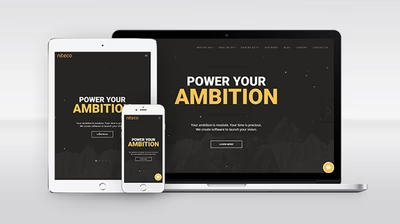The Episerver Digital Experience Cloud platform (DXC) has evolved into a very capable and flexible system for both B2C and B2B companies and organizations who want to accelerate their digital transformation. However, the breadth of capabilities, especially for new users, can seem overwhelming. How can companies ensure that their Episerver implementation is in line with both their corporate priorities and internal capability to manage a complex undertaking?
What is your minimum viable product?
When we begin working with a client on either a new platform implementation or a re-platforming, one of the first things we aim to do is develop the requirements for a Minimum Viable Product (MVP). But, what do we actually mean when we refer to MVP. In the context of rolling out a new Episerver website or e-commerce store, we’re talking about implementing the least number of features needed to satisfy the required minimum functionality for the business or organization, while building a strong foundation for future functionality and enhancement. The concept of MVP goes hand-in-hand with an Agile approach to collaboration and development, in that it helps the client and the development team focus on what features are most important and will deliver clear business value as quickly as possible.
Before you even get started on creating the MVP, it can be useful to take a step back to assess how ready your organization is for digital transformation. Episerver has developed a very useful tool called the Digital Agility Model that can help you gain a clear view of where you are on the digital transformation journey and, perhaps more importantly, what the likely next steps are to move forward. Your Niteco account manager or business analyst can help guide you through the process of creating your own Digital Agility Model for your organization. The result will allow you to have a clearer view of where you are at present and will provide detail on some of the steps you can choose to take to improve your score.

Episerver’s Digital Agility Model focuses on the two areas of business that can have the most significant impact on growth: Customer experience and Digital Operations. Within these two categories, they include four technologies that can have a major impact:
- Web content management (WCM)
- Digital commerce
- Campaign management
- Personalization.
Episerver has made it easy for organizations to understand where they are on the digital agility journey by identifying the steps as Crawl, Walk, Run and Fly to represent the different stages of Digital Agility.
- CRAWL - Meeting basic customer-experience expectations with limited technology.
- WALK - Beginning to provide best-practice user experiences on stale, siloed technologies.
- RUN - Large investments in digital operations to achieve next-level customer experiences.
- FLY - Highly responsive to changing customer-experience innovations; setting the standard for industry digital experiences.

Completing the Digital Agility Model process will help to inform your planning on the MVP in that it helps to understand that getting some of the basics in place first makes sense when building a longer-term digital strategy.
Be clear about your business objectives
But, how do you go about creating the actual MVP requirements? From the client side, it is really important for the Project/Product Executive Sponsor to be very clear about the business and financial objectives for the project. These can include measurable goals for things like cost reduction, sales increase, improved customer satisfaction, investor/media awareness, etc. Whatever the goals, they should be crystal clear, because when it comes time to make trade-offs between time and budget, we will always refer back to the core objectives of the project and, if a particular feature or functionality doesn’t align with the bigger goal, it generally shouldn’t be included in the MVP. Secondly, the Product Owner needs to have the authority to ensure there is adequate input from all internal “customers” for the new platform. Different departments and individuals will have their views as to what is most important. While everyone’s views are valuable, they need to be filtered and prioritized to make sure they are aligned with the Product Sponsor’s vision.
For most projects, Niteco will provide a business analyst and project manager to help with the process of refining what is to be included in the MVP. We will then work with the client on a Service Design plan to create the schedule for detailed requirements gathering and technical development, testing and launch.
Some of the benefits of an MVP approach include:
- Gaining the ability to launch within timeframe and budget.
- Achieving some quick “wins” to keep everyone enthusiastic about the platform and project.
- Gaining a thorough understanding of the capabilities of the new platform before further investing on extending its features and functions.
- Allowing the system users to stay in alignment with the overall goals of the organization and stakeholders.
Creating an MVP for your Episerver project may seem a daunting task, but with an organized and systematic approach, it will help you to have a successful and on-time project launch, while creating a foundation for maximizing the capabilities of your new Epi platform.
to transform your business and drive results?



